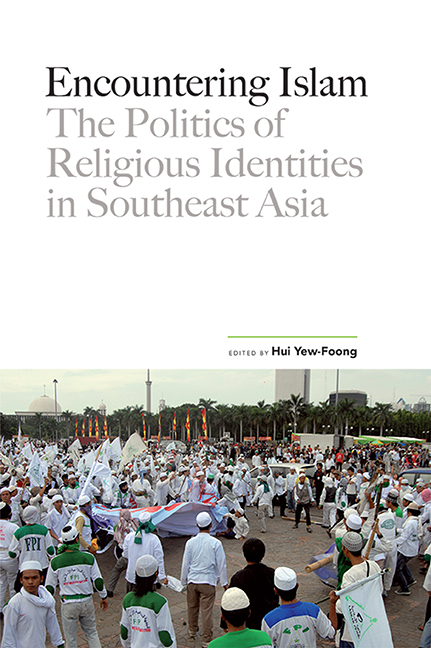Book contents
- Frontmatter
- Contents
- Acknowledgements
- Contributors
- Part I Introduction
- Part II Islam across Borders
- Part III Malaysia
- Part IV Indonesia
- Part V Muslim Minorities
- 11 Malay Muslims and the Thai-Buddhist State: Confrontation, Accommodation and Disengagement
- 12 Identifying with Fiction: The Art and Politics of Short Story Writing by Muslims in the Philippines
- 13 Issues on Islam and the Muslims in Singapore Post-9/11: An Analysis of the Dominant Perspective
- Index
11 - Malay Muslims and the Thai-Buddhist State: Confrontation, Accommodation and Disengagement
from Part V - Muslim Minorities
Published online by Cambridge University Press: 21 October 2015
- Frontmatter
- Contents
- Acknowledgements
- Contributors
- Part I Introduction
- Part II Islam across Borders
- Part III Malaysia
- Part IV Indonesia
- Part V Muslim Minorities
- 11 Malay Muslims and the Thai-Buddhist State: Confrontation, Accommodation and Disengagement
- 12 Identifying with Fiction: The Art and Politics of Short Story Writing by Muslims in the Philippines
- 13 Issues on Islam and the Muslims in Singapore Post-9/11: An Analysis of the Dominant Perspective
- Index
Summary
The Malay Muslims in the deep south of Thailand have a long history of asserting their identity against the assimilating force of a dominant Buddhist worldview. Buddhist Siam and its successor, Thailand, have had significant success in assimilating the wide variety of ethnic groups within its borders, including the Chinese, Lao, Khmer and others, into a form of national Thai identity. The only group that has successfully withstood the assimilation policies is the Malay community in the country's southernmost provinces of Pattani, Yala and Narathiwat. The greater the pressure that was put on to this community to surrender its explicit Malay identity, the more it has searched for — and found — ways to preserve its identity.
Historically, relations between the old Kingdom of Patani (the past incarnation of the three provinces, parts of Songkhla province and northern Malaysia) and Ayutthaya — later Bangkok — regularly led to conflict. Whenever the Burmese attacked the Siamese capital Ayutthaya, Patani would take advantage of its distraction and wrestle itself free of Siam's yoke. When the Ayutthaya kings (and sometimes queens) finally managed to push back the invading Burmese armies, they would send punitive expeditions to the South to bring the Malay vassal state back under their control. The Anglo-Siamese agreement of 1909 codified this conflict and left the Malay Muslims in Siam, as it were, on the wrong side of the border, separating them from the Malay community in what is now Malaysia, with which they share language, religion and family ties.
For many decades, Malay-Muslims in South Thailand have been discriminated against, and were considered to be khaek (guests or visitors) in Thailand. The height of the application of assimilationist policies towards Malay Muslims is generally agreed to have been during the governments of Prime Minister Phibunsongkhram (1938–44 and 1948–57). This nationalist leader glorified the Thai race, changed the name of the country from Siam to Thailand and left no space for minority identities like the Malay Muslims (and the Chinese). A host of forceful measures were put into effect. Speaking Malay was forbidden and there was strong pressure to change family names into Thai-sounding names (Gilquin 2005, p. 73).
- Type
- Chapter
- Information
- Encountering IslamThe Politics of Religious Identities in Southeast Asia, pp. 271 - 312Publisher: ISEAS–Yusof Ishak InstitutePrint publication year: 2012

